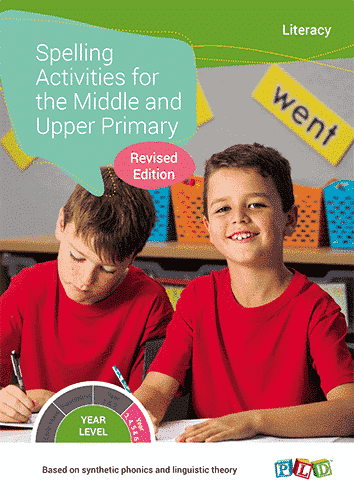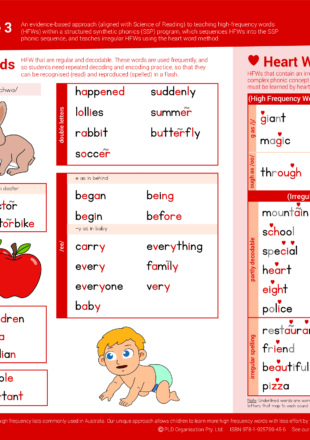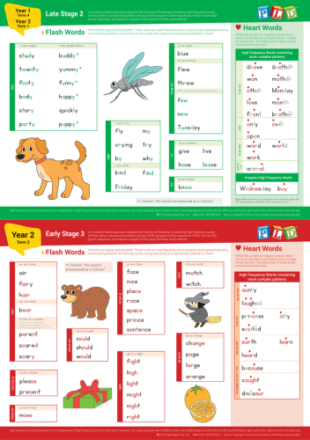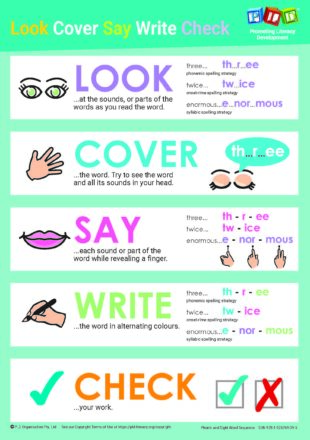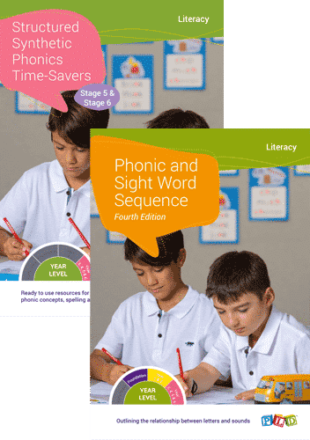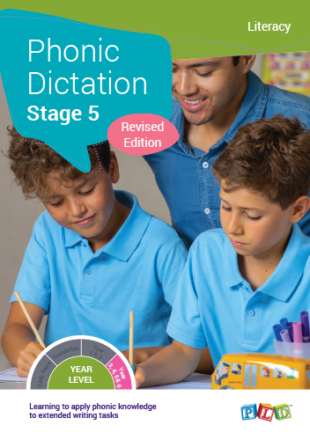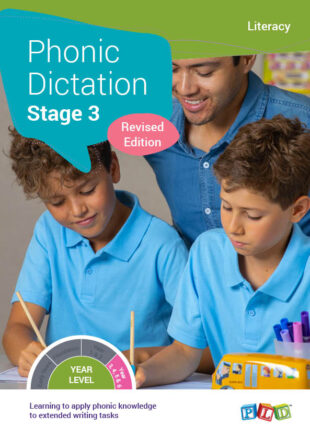This is a PLD Individual Licence resource. By purchasing this licence, this program will be accessible as a digital flipbook that will be stored in your secure account on the PLD website and may only be accessed by an individual user, being the Purchaser.
The program will be accessible as a digital flipbook that can be accessed by the purchaser on any device for as long as the licence is active. An Individual Licence is valid for 12 months from the date of purchase.
Sharing of an Individual Licence or account credentials for the purpose of sharing an Individual Licence is a breach of Australian Copyright Law and PLD Terms of Use. For more information,
visit our Individual Licence FAQ.
Synthetic phonics, vocabulary and writing activities.
The ability to read well is a basic skill and vital to national survival (Chall 1989). However, there have been ongoing concerns regarding the poor adult literacy rates since the introduction of whole language approaches to literacy development both within Australia and internationally. In 2004 these concerns led to a National Inquiry into the Teaching of Literacy (NITL) here in Australia. The results, published in 2005 recognised the importance of a systematic, synthetic phonics approach to reading instruction (Bowey 2006). These findings were independently echoed in the US and UK with recommendations that teaching of reading and spelling must include a synthetic phonics approach (Dooner 2010).
As Joshi (2009) clearly outlines, one cannot teach what one does not understand, and it is therefore important that teachers understand synthetic phonics, the alphabetic code, phonological awareness and types of language and vocabulary and how these work together in the development of strong literacy skills. Spelling Activities for the Middle and Upper Primary is intended to provide a definition of synthetic phonics and related skills, an understanding of the importance of synthetic phonics, and practical suggestions for how to teach synthetic phonics within the classroom, in addition to specific spelling activities which are based on the principles of synthetic phonics and are ready to use with your students individually, within small groups or as part of whole-class activities.
Features:
Middle and Upper Primary spelling activities resource (which incorporates synthetic phonics and linguistic theory).
Three levels of each template aim to cater for the range in ability (i.e. delayed, average and advanced students) evident in classrooms.
The activity templates are ready to photocopy.
A key resource when establishing a spelling program.
Assessment points are located at the base of each sheet (for students, a peer or teachers to rate task performance).
An ideal complement to PLD’s Phonic Sight Word Sequence.
This publication is mentioned within the Whole School Literacy Strategy booklet on page 22.
Other programs within the range include:
Spelling Activities are also available within the Time-Savers range:



